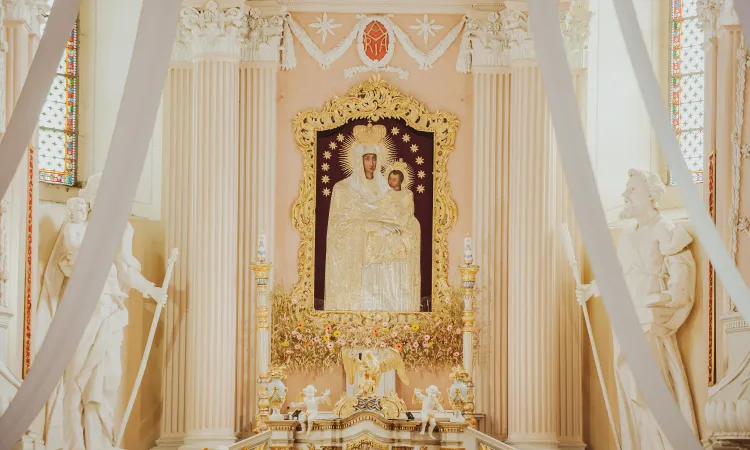In 1517, the Protestant Reformation spread in Lithuania quickly and powerfully. Churches were confiscated. The owner of the church of Siluva converted to Lutheranism in 1532.
A parish priest hid the documents about the foundation of the church and sacred items in an iron box and buried it, to avoid profanations.
In 1555, Calvinists took over and replaced the Lutherans. The Calvinists shut down the Siluva's church and send the clergy in exile. The church was left unused until the end of the 16th century, and later torn down.
A period of religious confusion followed.
More in A Vatican Observer
The Calvinists leaned toward a form of Arianism that denies the divinity of Jesus Christ. Many nobles found that drift unacceptable. As a consequence, Protestantism lost traction. On the other hand, a bunch of Jesuit missionaries who just got to those lands gave strength to Catholics to fight and win back their churches. This was the period right after the Council of Trent, which took place between 1545 and 1563 as a response to the Protestant reformation.
This is the context of the apparition of the Virgin in Siluva in 1608.
The first account of the apparition dates back to 1651. The report says that some shepherds who were grazing their flock in the territory where the church used to stand. There they saw, on the top of a large stone, a young woman with a beautiful head of hair, who was crying while holding a baby in her arms.
The shepherds alerted the Calvinist catechist of Siluva, who went to the place of the apparition along with the rector of the local seminary. Both the catechist and the rector saw the young woman and asked her why she was weeping.
"I weep," the woman said, "because the people used to worship my Son in this place, but now they just plow and sow." She then disappeared.
The news of the apparition quickly spread. The bishop sent an envoy to investigate the issue. The envoy also looked for the exact place where the ancient church was built, and for the documents of its foundation.
There was only one man who still knew where the iron box with the documents was buried. By the way, that man was old and blind. He was brought to the place of the apparition, and there he miraculously regained his sight and was able to indicate the exact location where the documents were.
(Column continues below)
Subscribe to our daily newsletter
Thanks to these documents, the Catholic church could initiate and eventually win a lawsuit to regain its lands in Siluva. A chapel was built on the place of the apparition, while the church was rebuilt in the same place as the old one. The new church promptly attracted many pilgrims, which was unusual, since it was still a Protestant territory.
The pilgrims were so many that in 1677 there were 12 priests taking care of them in Siluva. The church was rebuilt in late-Baroque style between 1760 and 1773. It has been a minor basilica since 1974, when St. Paul VI decided to elevate it to that status.
On the stone of the apparition, there is the chapel of Our Lady Health of the Sick. The chapel is shaped as a 144,3 -foot tall tower. The construction of the tower began at the beginning of the 20th century, intended to be the commemoration of the 3rd centenary of the apparition. However, the chapel was completed only after the First World War, in 1924.
The painting of Our Lady with the Child Jesus is quite recent. For years, it was thought that the picture was one of the remnants of the 15th-century church. It turned out it was painted in the 17th century by a local artist.
The painting is a copy of the icon Maria Salus Populi Romani (Mary, the Salvation of the Roman People), worshipped in the St. Mary the Major Basilica in Rome. For most of the year, the painting is covered by a golden and silver cover, except for the faces and the hands of Mary and Jesus.
In the 18th century, the Holy See granted permission to crown Siluva's painting solemnly. Before the coronation, bishop Steponas Giedraitis established a commission to investigate the apparition and the miracles that took place thanks to the intercession of the Virgin of Siluva.



